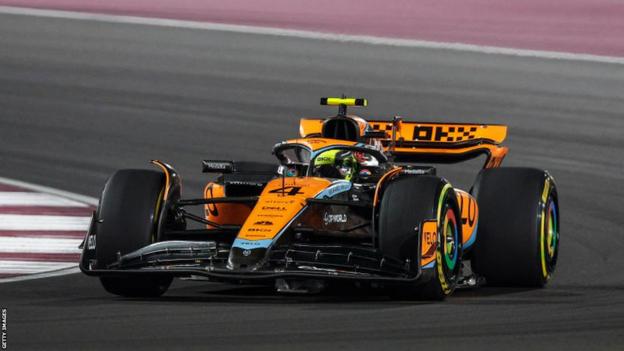
McLaren are to trial the use of recycled carbon fibre on their cars at next week’s US Grand Prix.
It will be used on cockpit panels on Lando Norris and Oscar Piastri’s cars.
If the experiment is a success, McLaren will continue using the material for the remainder of the 2023 season and plan to expand its use in future years.
Recycled carbon fibre (rCF) offers a number of environmental benefits, including a 90% reduction in lifecycle carbon emissions, McLaren said.
“The potential future applications of rCF are hugely exciting,” McLaren chief operating officer Piers Thynne said.
“It offers up to 85% of carbon fibre’s original strength, making it strong enough for a variety of applications in F1 and beyond.
“We will continue to work closely with the FIA, F1 and fellow teams to help accelerate change.”

F1 teams use carbon fibre to manufacture most parts of their cars because of its ability to combine strength – torsional rigidity – with light weight.
The material is used increasingly across other industries, such as aviation and automotive and even home audio, for its wide range of properties.
But carbon fibre manufacture is extremely carbon intensive and making the car is one of the largest contributing factors to an F1 team’s carbon footprint.
McLaren said in a statement that the emissions reduction provided by using recycled carbon fibre was the equivalent of 27 tonnes of carbon emissions for each tonne of material used.
It adds that if “just 1% of the carbon fibre manufactured globally in 2022 was rCF, it would save 32,535 tonnes of carbon emissions”.
The project starting at the United States race in Austin, Texas, from 20-22 October is one of the steps McLaren is taking towards the team’s ambition to make their F1 car as sustainable as possible – what they call the “circular F1 car” – by 2030.
The team describe this aim as “minimising the resources we consume and the waste we produce, and maximising the value of the products and materials we use”.
It adds that it “keeps materials in circulation for longer, and makes sure that they are disposed of correctly at end of life. By thinking in a circular way across our operations, we can reduce our environmental impacts, save cost, and improve efficiency.”
This is in line with F1’s wider sustainability aims. The sport has pledged to go net-zero carbon by 2030, and from 2026 is introducing fully sustainable synthetic e-fuels as part of a set of new engine regulations which significantly increase the proportion of hybrid power in the total output of the engine.
